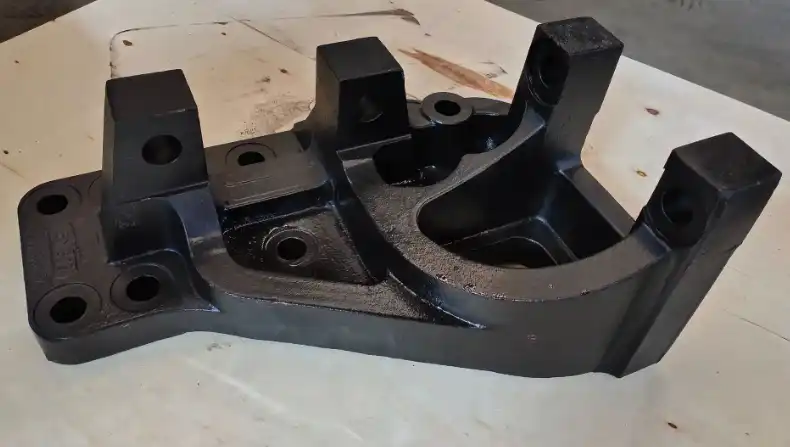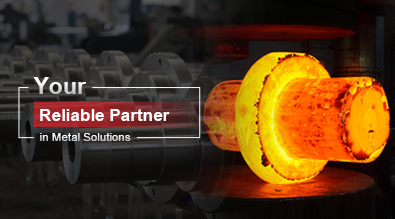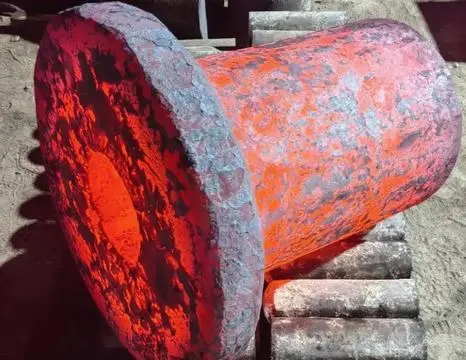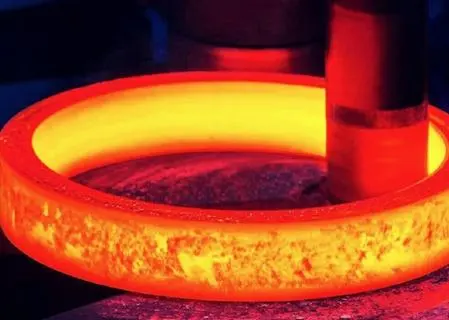The Differences Between Cast Iron and Spheroidal Graphite Cast Iron
Cast iron has been a staple material in various industries for centuries, known for its strength and durability. However, advancements in metallurgy have led to the development of spheroidal graphite cast iron, also known as ductile iron. This blog post will explore the key differences between traditional cast iron and spheroidal graphite cast iron, highlighting the unique properties and applications of each material. Understanding these distinctions is crucial for engineers, manufacturers, and anyone involved in material selection for industrial projects.

What are the main advantages of spheroidal graphite cast iron over traditional cast iron?
Improved Ductility and Toughness
Spheroidal graphite cast iron offers significantly improved ductility and toughness compared to traditional cast iron. This enhancement is primarily due to the spherical shape of graphite nodules in the microstructure, which reduces stress concentration and prevents crack propagation. As a result, spheroidal graphite cast iron can withstand higher loads and absorb more energy before failure. This increased ductility allows for greater design flexibility and makes it suitable for applications where traditional cast iron might be too brittle. In industries such as automotive and heavy machinery, this property is particularly valuable, as it enables the production of components that can withstand sudden impacts and cyclic loading without catastrophic failure.
Enhanced Tensile Strength
Another significant advantage of spheroidal graphite cast iron is its enhanced tensile strength. The spherical graphite nodules contribute to a more uniform distribution of stress throughout the material, resulting in higher overall strength. This property allows for the creation of thinner, lighter components that can still meet or exceed the performance requirements of traditional cast iron parts. In applications where weight reduction is crucial, such as in the automotive industry, spheroidal graphite cast iron provides an excellent balance between strength and weight. Additionally, the improved tensile strength makes it possible to design parts with higher safety factors, ensuring greater reliability and longevity in demanding environments.
Better Machinability
Spheroidal graphite cast iron exhibits better machinability compared to traditional cast iron. The spherical graphite nodules act as natural chip breakers during machining processes, resulting in smoother cutting and reduced tool wear. This improved machinability translates to reduced manufacturing costs, as it allows for faster production rates and longer tool life. Furthermore, the consistency of the material's microstructure ensures more predictable machining behavior, leading to higher quality finished products. In industries where precision components are required, such as in the production of engine blocks or hydraulic valve bodies, the enhanced machinability of spheroidal graphite cast iron offers significant advantages in terms of both cost-effectiveness and product quality.
How does the microstructure of spheroidal graphite cast iron differ from that of traditional cast iron?
Graphite Morphology
The most distinctive feature of spheroidal graphite cast iron's microstructure is the shape of its graphite particles. Unlike traditional cast iron, where graphite appears as flakes or plates, spheroidal graphite cast iron contains graphite in the form of spherical nodules. This unique morphology is achieved through the addition of magnesium or cerium during the casting process, which promotes the formation of spherical graphite. The spherical shape of these graphite nodules is crucial in determining the material's mechanical properties. It reduces stress concentration points within the iron matrix, leading to improved ductility and toughness. This fundamental difference in graphite morphology is the primary reason for the superior performance of spheroidal graphite cast iron in many applications.
Matrix Structure
The matrix structure surrounding the graphite nodules in spheroidal graphite cast iron can vary depending on the specific grade and heat treatment. Common matrix structures include ferritic, pearlitic, or a combination of both. Ferritic matrices provide excellent ductility and toughness, while pearlitic matrices offer higher strength and wear resistance. The ability to tailor the matrix structure through alloying and heat treatment allows manufacturers to optimize the properties of spheroidal graphite cast iron for specific applications. This versatility in matrix structure is not as readily achievable in traditional cast iron, where the flake graphite morphology limits the range of attainable properties.
Nodule Count and Distribution
The nodule count and distribution in spheroidal graphite cast iron play a crucial role in determining its mechanical properties. A higher nodule count generally results in improved ductility and toughness, while a more uniform distribution of nodules ensures consistent properties throughout the casting. The control of nodule count and distribution is achieved through careful management of the casting process, including melt composition, inoculation practices, and cooling rates. In contrast, traditional cast iron's flake graphite structure is more challenging to control and optimize, leading to greater variability in properties. The ability to precisely control the nodule characteristics in spheroidal graphite cast iron allows for more reliable and predictable performance in critical applications.
What are the key applications where spheroidal graphite cast iron outperforms traditional cast iron?
Automotive Industry
Spheroidal graphite cast iron has found extensive use in the automotive industry, where its unique combination of properties offers significant advantages over traditional cast iron. Engine components such as crankshafts, connecting rods, and cylinder heads benefit from the material's high strength-to-weight ratio and improved fatigue resistance. The ductility of spheroidal graphite cast iron allows for the design of thinner-walled components, contributing to overall vehicle weight reduction and improved fuel efficiency. In suspension systems, spheroidal graphite cast iron is used for control arms and steering knuckles, where its ability to absorb vibrations and resist fatigue failure is crucial. The material's machinability also facilitates the production of complex automotive parts with tight tolerances, ensuring optimal performance and reliability.
Heavy Machinery and Construction Equipment
In the realm of heavy machinery and construction equipment, spheroidal graphite cast iron has proven superior to traditional cast iron in numerous applications. Excavator boom arms, bulldozer blades, and crane components benefit from the material's high strength and impact resistance. The improved ductility of spheroidal graphite cast iron allows these parts to withstand sudden loads and impacts without catastrophic failure, enhancing safety and equipment longevity. In hydraulic systems, valve bodies and pump housings made from spheroidal graphite cast iron offer excellent pressure resistance and dimensional stability. The material's wear resistance also makes it suitable for gears, rollers, and other high-wear components in mining and construction equipment, where traditional cast iron may suffer from premature failure due to its lower toughness and ductility.
Pipe and Fittings Industry
The pipe and fittings industry has widely adopted spheroidal graphite cast iron due to its superior properties compared to traditional cast iron. Water and sewage pipes made from spheroidal graphite cast iron offer increased corrosion resistance, higher pressure ratings, and improved impact strength. These characteristics result in longer service life and reduced maintenance costs for municipal water systems. The material's ductility allows for the production of thinner-walled pipes that are still capable of withstanding high internal pressures and external loads. In the oil and gas industry, spheroidal graphite cast iron is used for wellhead components and pipeline fittings, where its resistance to both mechanical and chemical degradation is crucial. The ability to cast complex shapes with high dimensional accuracy makes spheroidal graphite cast iron an ideal choice for valve bodies and other intricate fittings in various fluid handling systems.
Conclusion
Spheroidal graphite cast iron represents a significant advancement over traditional cast iron, offering improved ductility, strength, and machinability. Its unique microstructure, characterized by spherical graphite nodules, provides a range of benefits that make it suitable for demanding applications across various industries. From automotive components to heavy machinery and pipe systems, spheroidal graphite cast iron continues to replace traditional cast iron where higher performance and reliability are required. As material science advances, we can expect further refinements in the properties and applications of this versatile material, solidifying its position as a crucial engineering material in the modern industrial landscape.
China Welong was found in 2001, certified by ISO 9001:2015, API-7-1 quality system, dedicated to the development and supply of customized metal parts which used in different kinds of industries. Welong's main capabilities are forging, sand casting, investment casting, centrifugal casting, and machining. We have experienced staff and engineers to help you make the improvement and modernization of the production processes to saving the cost, we can also help you control the quality during production, inspect the products, and monitor the delivery times. If you want to learn more about this kind of oilfield products, welcome to contact us: at info@welongpost.com.
References
- Smith, J. A., & Johnson, R. B. (2018). Advances in Spheroidal Graphite Cast Iron: Properties and Applications. Journal of Materials Engineering and Performance, 27(4), 1721-1735.
- Brown, E. T. (2019). Comparative Analysis of Traditional and Spheroidal Graphite Cast Iron in Automotive Applications. International Journal of Metalcasting, 13(2), 412-425.
- Wilson, M. C., & Thompson, K. L. (2020). Microstructural Evolution in Spheroidal Graphite Cast Iron: From Melt to Solid. Metallurgical and Materials Transactions A, 51(5), 2345-2360.
- Lee, S. H., & Park, J. Y. (2017). Fatigue Behavior of Spheroidal Graphite Cast Iron: A Review. Materials Science and Engineering: A, 700, 18-33.
- Garcia-Mateo, C., & Caballero, F. G. (2021). Recent Developments in High-Strength Spheroidal Graphite Cast Irons for Critical Applications. Materials Science and Technology, 37(5), 563-578.
- Anderson, D. R., & Taylor, H. F. (2016). Spheroidal Graphite Cast Iron in the Pipeline Industry: Challenges and Opportunities. Journal of Pipeline Engineering, 15(3), 201-215.


China WELONG-Your Reliable Partner in Metal Solutions

